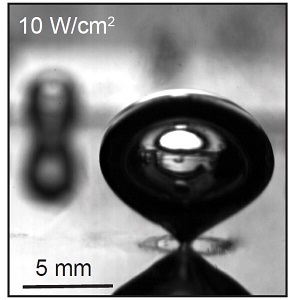Boiling is significantly altered by the presence of dissolved salts. In articular, salts whose solubility decreases with temperature have the tendency to crystallize and adhere to the heat transfer surface and adversely affect the thermal performance. Scaling due to the precipitation of such salts poses serious operational and safety challenges in several practical applications, including heat exchangers, pipelines, and desalination. Here, we study the effect of dissolved salts on the dynamics of pool boiling and its impact on the heat transfer coefficient and critical heat flux (CHF). We find that even undersaturated conditions can lead to crystallization and scale buildup on the boiling surface and dramatically lower heat transfer performance. For example, the CHF for a salt solution that is 75% of the saturation concentration is found to be at least 2 times lower than that for deionized water. Using simultaneous high-speed optical and infrared imaging, we determine the interdependence between crystallization-induced scale formation and bubble evolution dynamics, including bubble nucleation, growth, and departure. We find that salt crystallizes in a “coffee-ring” pattern due to evaporation at the contact line of the bubble. On the basis of the role of the microlayer and triple contact line on scale formation, we propose manipulating surface wettability as a means to avoid scale formation and the associated decrease in the heat transfer coefficient. Surfaces with hybrid wettability are demonstrated as a means to mitigate the reduction in the heat transfer coefficient and CHF in the presence of dissolved salts.
Paper: Susmita Dash, Leonid Rapoport, and Kripa K. Varanasi, Langmuir
PDF: Download the PDF

